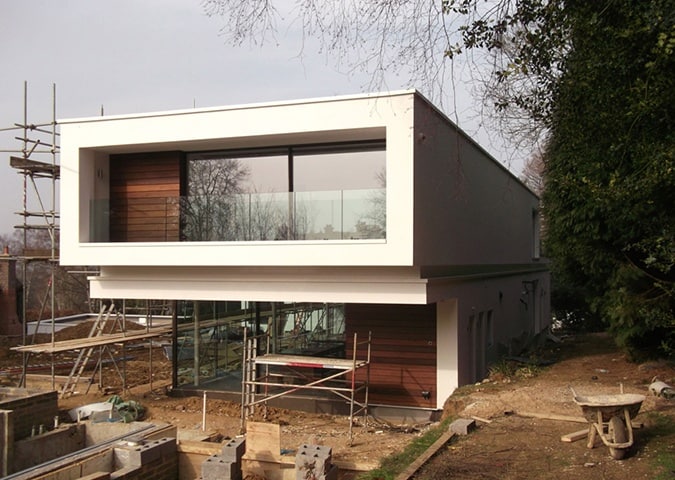BLOG
INTERESTING STUFF
THAT CAUGHT OUR EYE
Guest Blog: Why You Need a Structural Engineer

Nigel Reynolds is a structural engineer with over 30 years of experience, 20 of which have been spent at the head of his consultancy firm Elite Designers – our trusted partner for many of our most complex projects, including the award-winning Emperor’s Gate. I asked Nigel to share with our readers insight into the role of a structural engineer and his advice for building homes that last. – John Dyer-Grimes
Structural engineers make sure buildings don’t fall down.
That may be a massive simplification, but it’s the easiest way to explain the value of what we do. All building work is an act of defying gravity and resisting the elements, meaning that even the simplest house needs to be designed to bear constant pressure from numerous forces. All it takes is one thing to be out of place to compromise the entire structure.
In nearly all cases where we encounter a house with structural issues, bad construction is to blame, whether it was built in Victorian times or just last week. The temptation to cut corners is nothing new, and though we may love our old houses, once you peel back the layers you can find some truly shocking shortcuts made by less than scrupulous builders over the centuries. This is true whether you’re working on a multi-million pound town house or a modest countryside cottage.
Though it’s a fact that goes unappreciated if you were to ask someone on the street, building standards have improved dramatically in modern times, and structural engineers have played a huge role in that. Drawing on a mix of science, common sense and thousands of years of architectural and engineering history, we ensure projects are built safely and built to last.
Now, you may wonder if an architect designs the house and the contractors build it, where does a structural engineer fit in?
The answer is: right in between. A structural engineer is a bridge between the gaziantep escort bayan architect and the contractors, working with the former to make their designs buildable and with the latter to ensure the finished building is true to the architectural vision.
I had the good fortune to study engineering at Imperial College during the construction boom of the 80s and my summer jobs on construction sites all over London allowed me to not only see the theory of my studies in practice but to also try my hand at labouring, bricklaying, carpentry and much more. Now, I urge fresh graduates who join my practice to spend as much time on site as possible, so that when they are back at their desks they understand the practical implications of their designs for the people charged with implementing them.
An architect could design the most beautiful home that perfectly realises their client’s wildest dreams, but that design is useless if it can’t physically be built. Buildability becomes especially difficult in London, where houses are tightly packed together and surrounded by infrastructure. How materials, equipment and waste are going to be moved on and off site has a tremendous impact on the design itself and how it’s phased, so it’s essential that we’re involved in a project from its earliest stages.

Steelworks erected on site during construction of White Lodge, also pictured above at a later stage of development.
Having a structural engineer on board from day one can also save you from very costly mistakes.
For example, I was working on a project that was intended to be a relatively simple renovation and extension job. But the house had severe structural issues including subsidence and bowing walls. After going over the calculations, I realised the work involved in renovating such a compromised structure was more expensive than knocking it down and rebuilding it.
In the end, the house was rebuilt identical to its old appearance using the original bricks and stone lintels but with the benefit of a sturdy, well insulated modern structure as well as an additional basement floor and rear extension. Had the build continued with a renovation instead, it would have been more expensive with a less valuable end result.
Now that you know a bit about what I do, click here to read about how to safely increase space in your home. If you have any questions, feel free to get in touch with Elite Designers at hello@elitedesigners.co.uk.
Thank you for reading,
Nigel Reynolds
